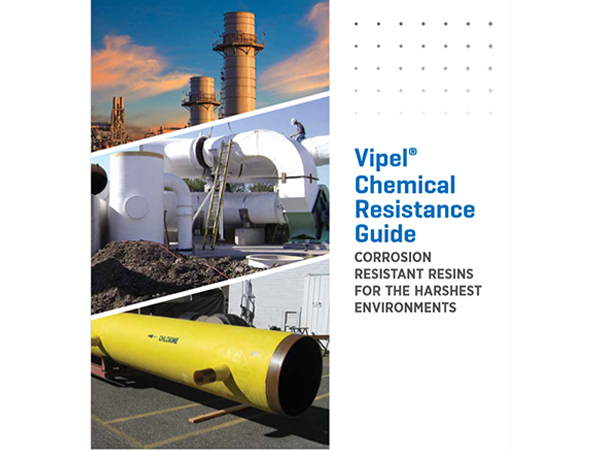
-
 Afrikaans
Afrikaans -
 Albanian
Albanian -
 Amharic
Amharic -
 Arabic
Arabic -
 Armenian
Armenian -
 Azerbaijani
Azerbaijani -
 Basque
Basque -
 Belarusian
Belarusian -
 Bengali
Bengali -
 Bosnian
Bosnian -
 Bulgarian
Bulgarian -
 Catalan
Catalan -
 Cebuano
Cebuano -
 China
China -
 China (Taiwan)
China (Taiwan) -
 Corsican
Corsican -
 Croatian
Croatian -
 Czech
Czech -
 Danish
Danish -
 Dutch
Dutch -
 English
English -
 Esperanto
Esperanto -
 Estonian
Estonian -
 Finnish
Finnish -
 French
French -
 Frisian
Frisian -
 Galician
Galician -
 Georgian
Georgian -
 German
German -
 Greek
Greek -
 Gujarati
Gujarati -
 Haitian Creole
Haitian Creole -
 hausa
hausa -
 hawaiian
hawaiian -
 Hebrew
Hebrew -
 Hindi
Hindi -
 Miao
Miao -
 Hungarian
Hungarian -
 Icelandic
Icelandic -
 igbo
igbo -
 Indonesian
Indonesian -
 irish
irish -
 Italian
Italian -
 Japanese
Japanese -
 Javanese
Javanese -
 Kannada
Kannada -
 kazakh
kazakh -
 Khmer
Khmer -
 Rwandese
Rwandese -
 Korean
Korean -
 Kurdish
Kurdish -
 Kyrgyz
Kyrgyz -
 Lao
Lao -
 Latin
Latin -
 Latvian
Latvian -
 Lithuanian
Lithuanian -
 Luxembourgish
Luxembourgish -
 Macedonian
Macedonian -
 Malgashi
Malgashi -
 Malay
Malay -
 Malayalam
Malayalam -
 Maltese
Maltese -
 Maori
Maori -
 Marathi
Marathi -
 Mongolian
Mongolian -
 Myanmar
Myanmar -
 Nepali
Nepali -
 Norwegian
Norwegian -
 Norwegian
Norwegian -
 Occitan
Occitan -
 Pashto
Pashto -
 Persian
Persian -
 Polish
Polish -
 Portuguese
Portuguese -
 Punjabi
Punjabi -
 Romanian
Romanian -
 Russian
Russian -
 Samoan
Samoan -
 Scottish Gaelic
Scottish Gaelic -
 Serbian
Serbian -
 Sesotho
Sesotho -
 Shona
Shona -
 Sindhi
Sindhi -
 Sinhala
Sinhala -
 Slovak
Slovak -
 Slovenian
Slovenian -
 Somali
Somali -
 Spanish
Spanish -
 Sundanese
Sundanese -
 Swahili
Swahili -
 Swedish
Swedish -
 Tagalog
Tagalog -
 Tajik
Tajik -
 Tamil
Tamil -
 Tatar
Tatar -
 Telugu
Telugu -
 Thai
Thai -
 Turkish
Turkish -
 Turkmen
Turkmen -
 Ukrainian
Ukrainian -
 Urdu
Urdu -
 Uighur
Uighur -
 Uzbek
Uzbek -
 Vietnamese
Vietnamese -
 Welsh
Welsh -
 Bantu
Bantu -
 Yiddish
Yiddish -
 Yoruba
Yoruba -
 Zulu
Zulu
High-Quality FRP Underground Tanks - Durable & Reliable Solutions
Understanding FRP Underground Tanks A Comprehensive Overview
Fiberglass Reinforced Plastic (FRP) underground tanks have revolutionized the way industries handle the storage of liquids and gases. These tanks, made from a composite material composed of fiberglass and resin, offer significant advantages over traditional materials such as steel or concrete. As we delve into the intricate details of FRP underground tanks, we will explore their benefits, applications, and maintenance aspects.
Advantages of FRP Underground Tanks
One of the most notable benefits of FRP underground tanks is their resistance to corrosion. Unlike steel tanks that can succumb to rust and chemical degradation, FRP tanks exhibit excellent chemical resistance. This property makes them ideal for storing a variety of substances, including fuels, chemicals, and waste products. The longevity of FRP tanks can lead to reduced replacement costs and lower long-term expenses.
Moreover, FRP tanks are lighter than their steel counterparts, making them easier to transport and install. This lightweight nature does not compromise their strength; in fact, FRP tanks are often designed to withstand considerable external pressures, making them suitable for underground use. Additionally, their flexibility allows for easy customization in terms of size and shape, catering to specific customer needs.
Another advantage is the insulation properties of FRP. The material is effective in maintaining stable temperatures, which is crucial for certain applications, particularly those involving chemicals that are sensitive to temperature fluctuations. This feature can enhance the overall efficiency and safety of stored materials.
Applications
frp underground tank

FRP underground tanks find applications in a wide range of sectors. One of the most common uses is in the petroleum industry for storing gasoline, diesel, and other fuels. Additionally, they are widely employed in the chemical industry to store corrosive substances that would be unsuitable for conventional materials. Water treatment facilities also utilize FRP tanks for the storage of various chemicals used in purification processes.
Furthermore, as more businesses prioritize sustainability and environmental safety, FRP tanks are becoming increasingly popular in waste management. Their corrosion resistance ensures that harmful materials do not leak into the surrounding soil or groundwater, thereby minimizing environmental risks.
Maintenance of FRP Tanks
While FRP tanks generally require less maintenance than metal tanks, regular inspections are essential to ensure their integrity. Monitoring for signs of wear, such as cracks or bubbling in the fiberglass exterior, can prevent more significant issues down the line. It's also vital to ensure that the tanks are installed correctly to avoid any structural compromise.
Cleaning procedures should be carefully followed to avoid damaging the surface of the tank. Using harsh chemicals or abrasive tools can compromise the tank's integrity. Instead, recommend softer cleaning solutions that won't affect the fiberglass.
Conclusion
In conclusion, FRP underground tanks offer a range of advantages over traditional storage options, including corrosion resistance, lightweight construction, and superior insulation properties. Their versatility allows for diverse applications across various industries, making them an invaluable asset in modern storage solutions. With proper maintenance and inspection, FRP tanks can provide safe, efficient, and environmentally friendly storage for many years, ensuring that industries can effectively manage their liquid and gas storage needs. As technology continues to evolve, the future of FRP tanks looks bright, promising even more innovations in design and functionality.
Latest news
-
Exploring the Benefits of Top Hammer Drifter Rods for Enhanced Drilling PerformanceNewsJun.10,2025
-
High-Precision Fiberglass Winding Machine for GRP/FRP Pipe Production – Reliable & Efficient SolutionsNewsJun.10,2025
-
FRP Pipes & Fittings for Shipbuilding - Corrosion-Resistant & LightweightNewsJun.09,2025
-
Premium FRP Flooring Solutions Durable & Slip-ResistantNewsJun.09,2025
-
Premium Fiberglass Rectangular Tanks Durable & Lightweight SolutionNewsJun.09,2025
-
Tapered Drill String Design Guide Durable Performance & UsesNewsJun.09,2025









